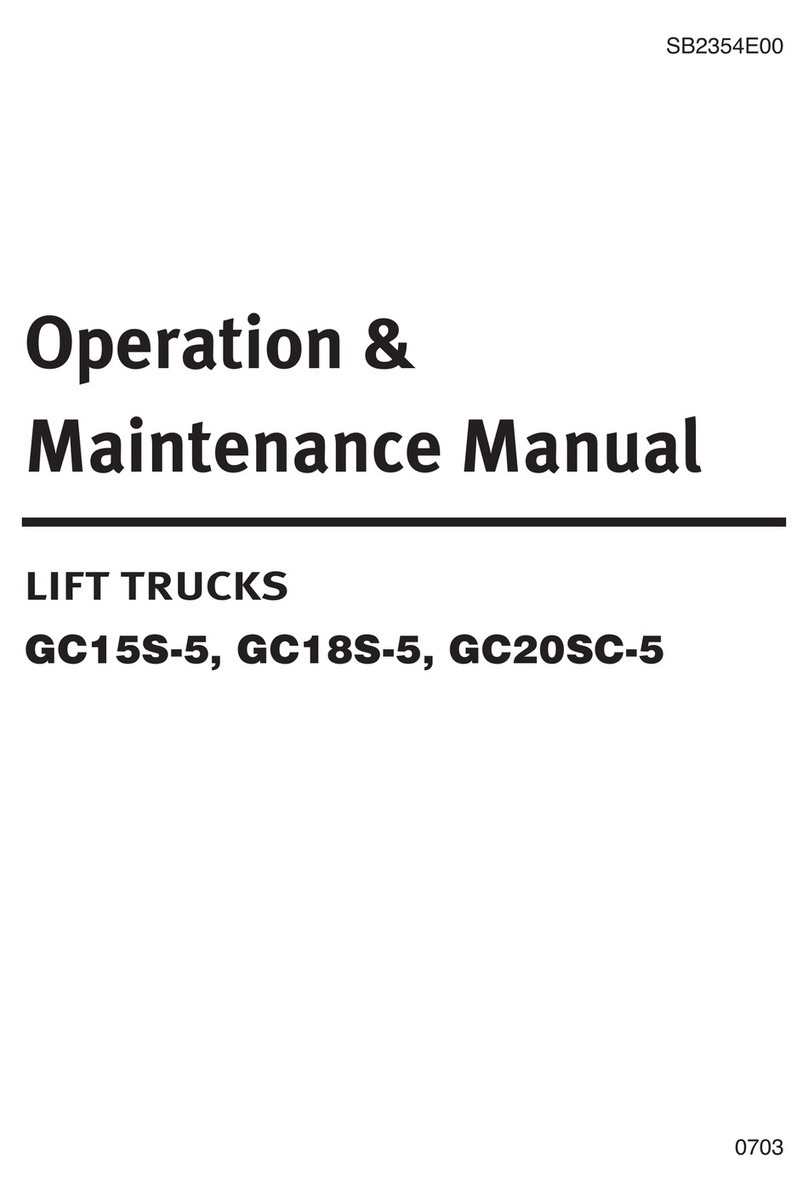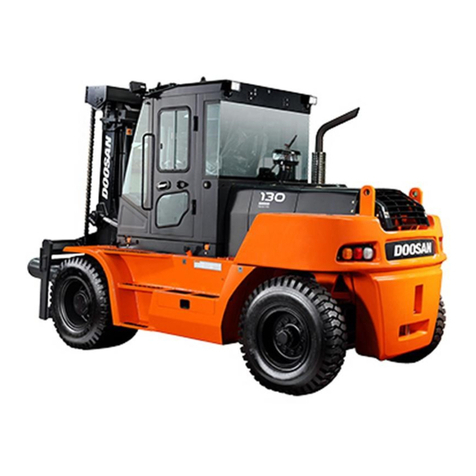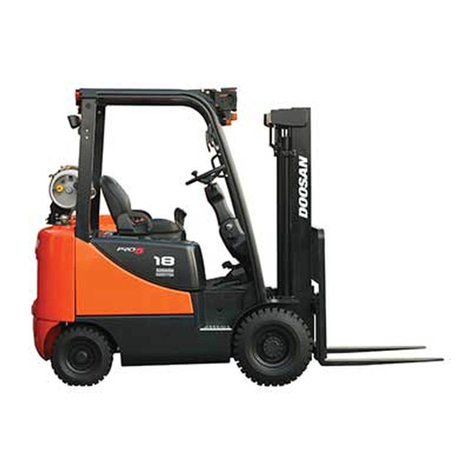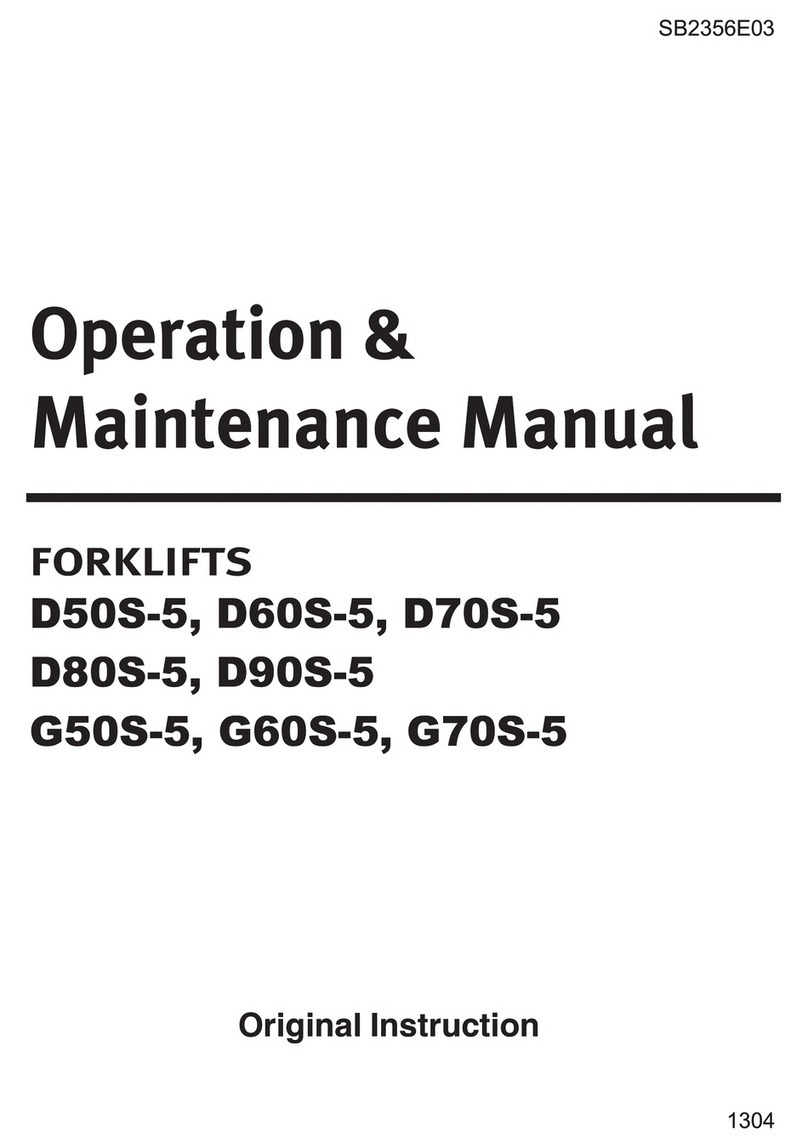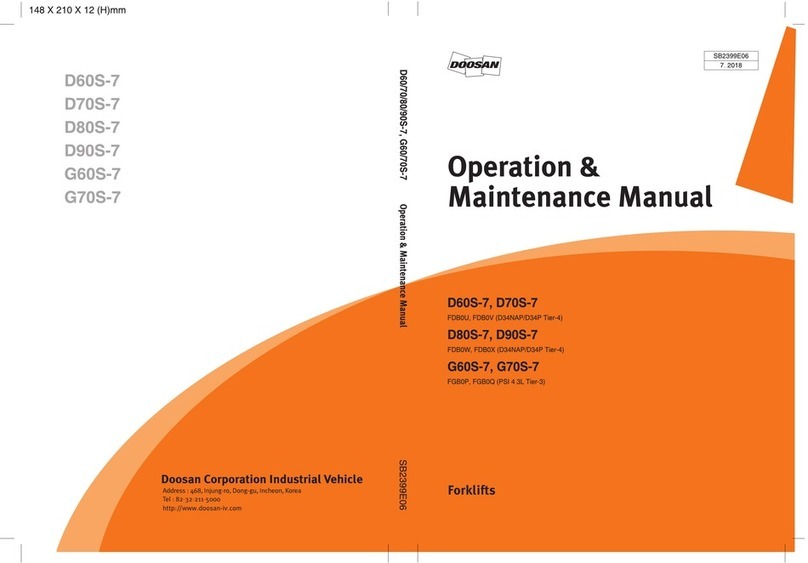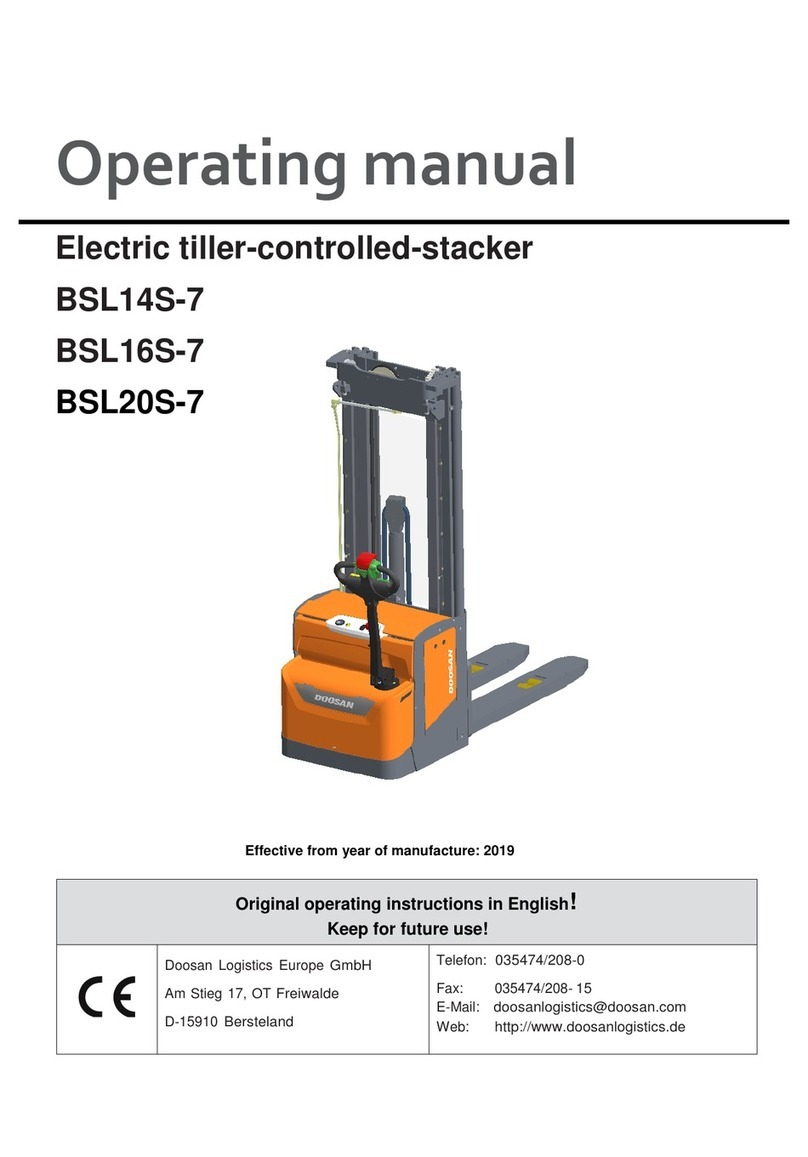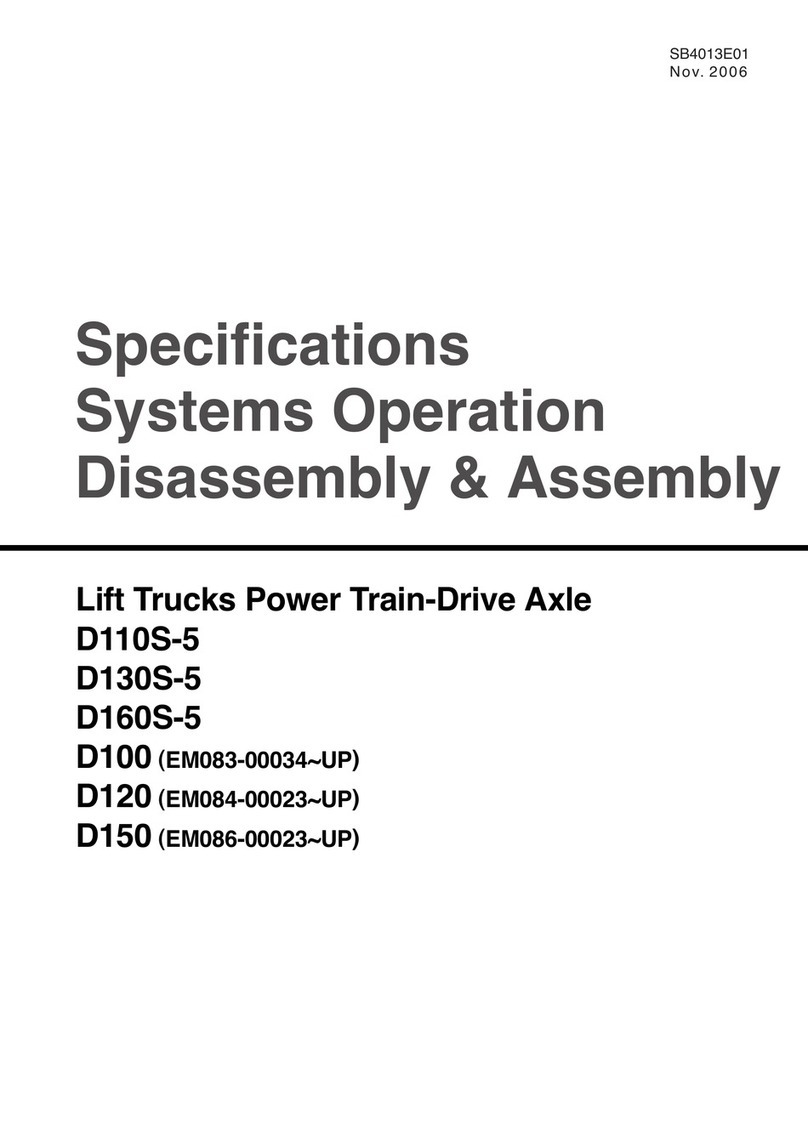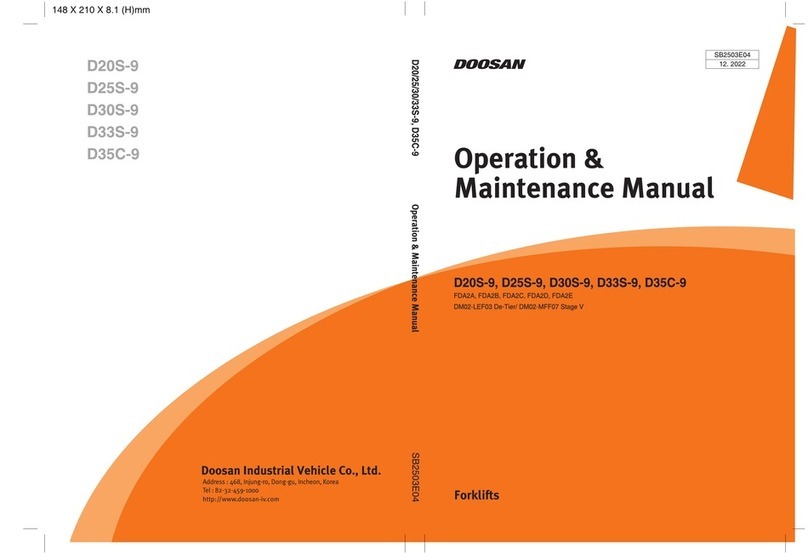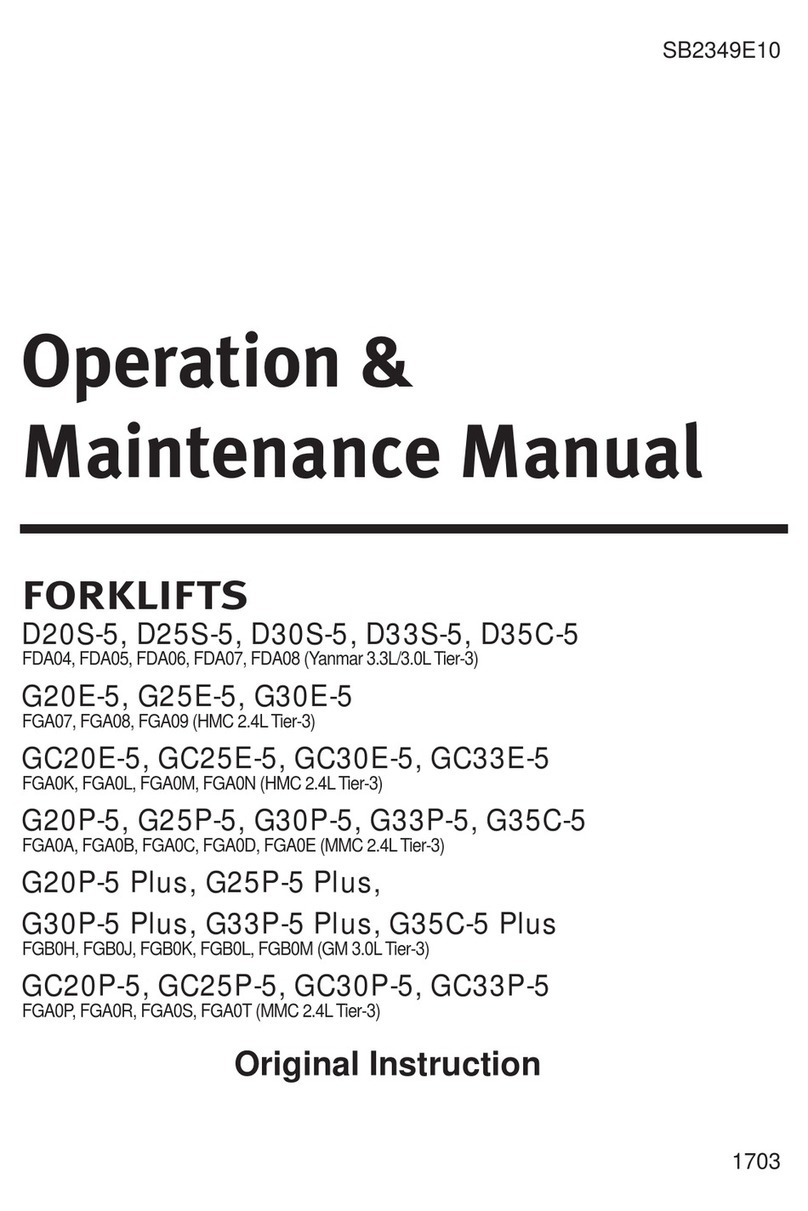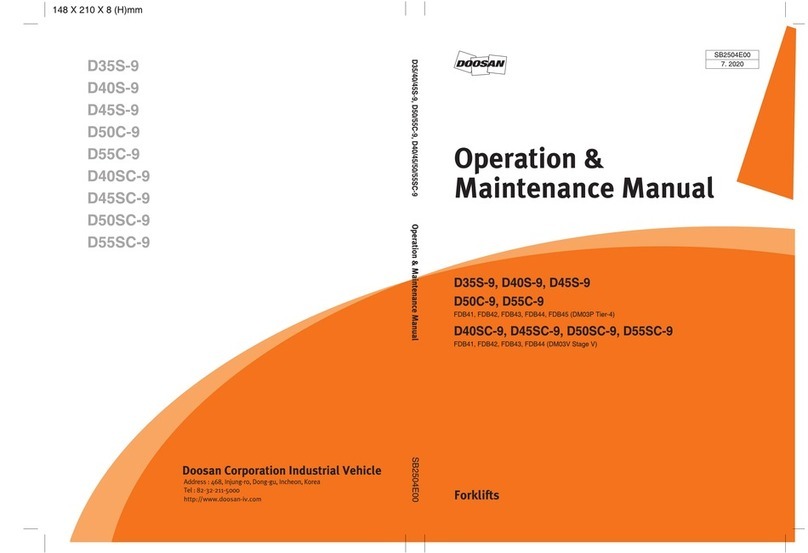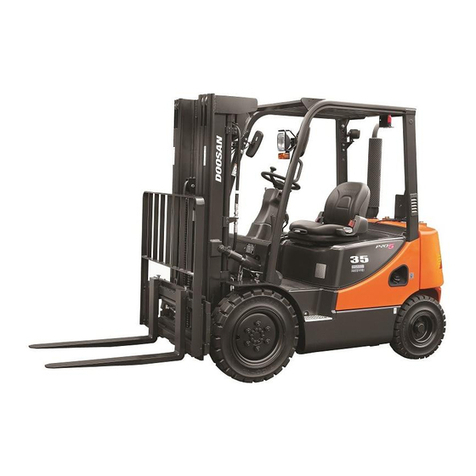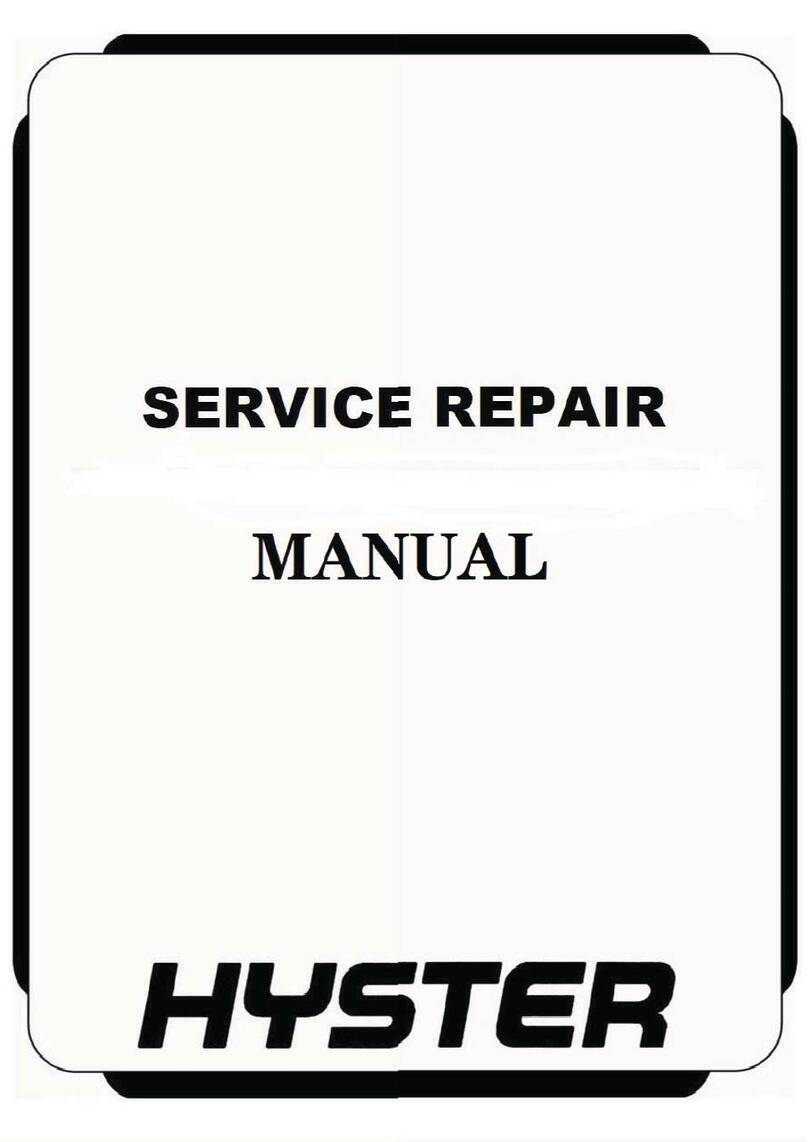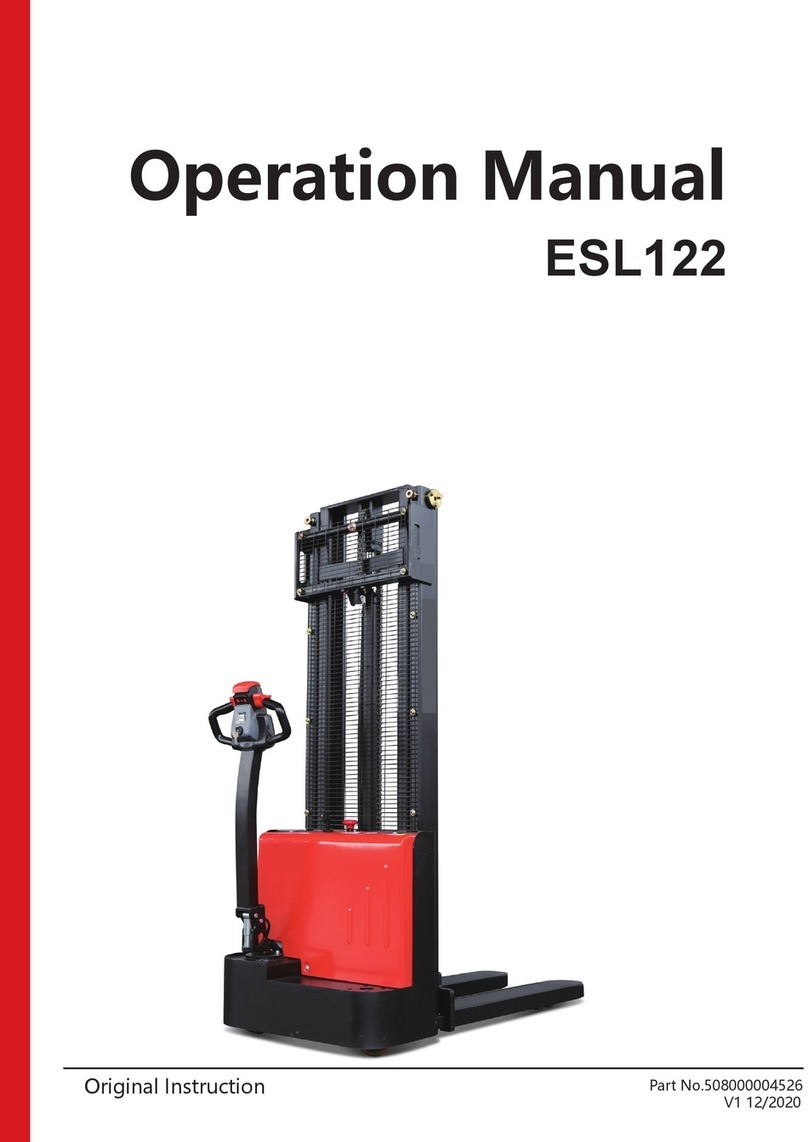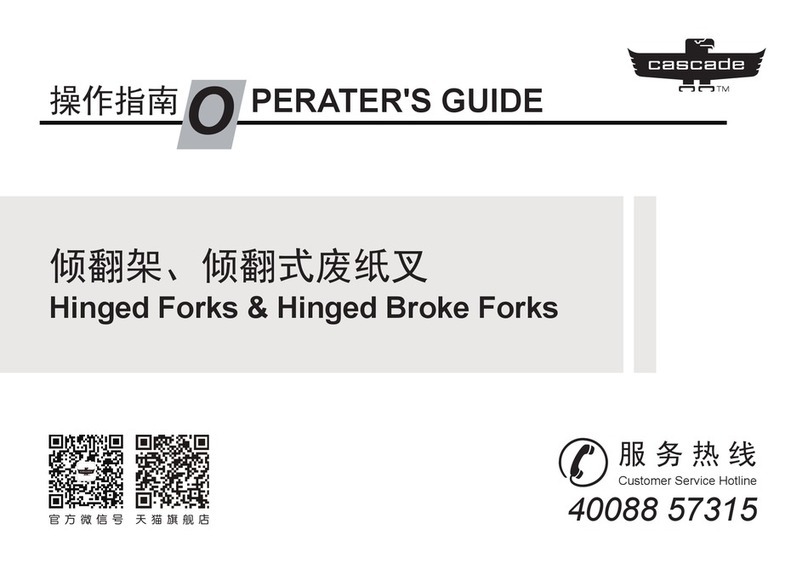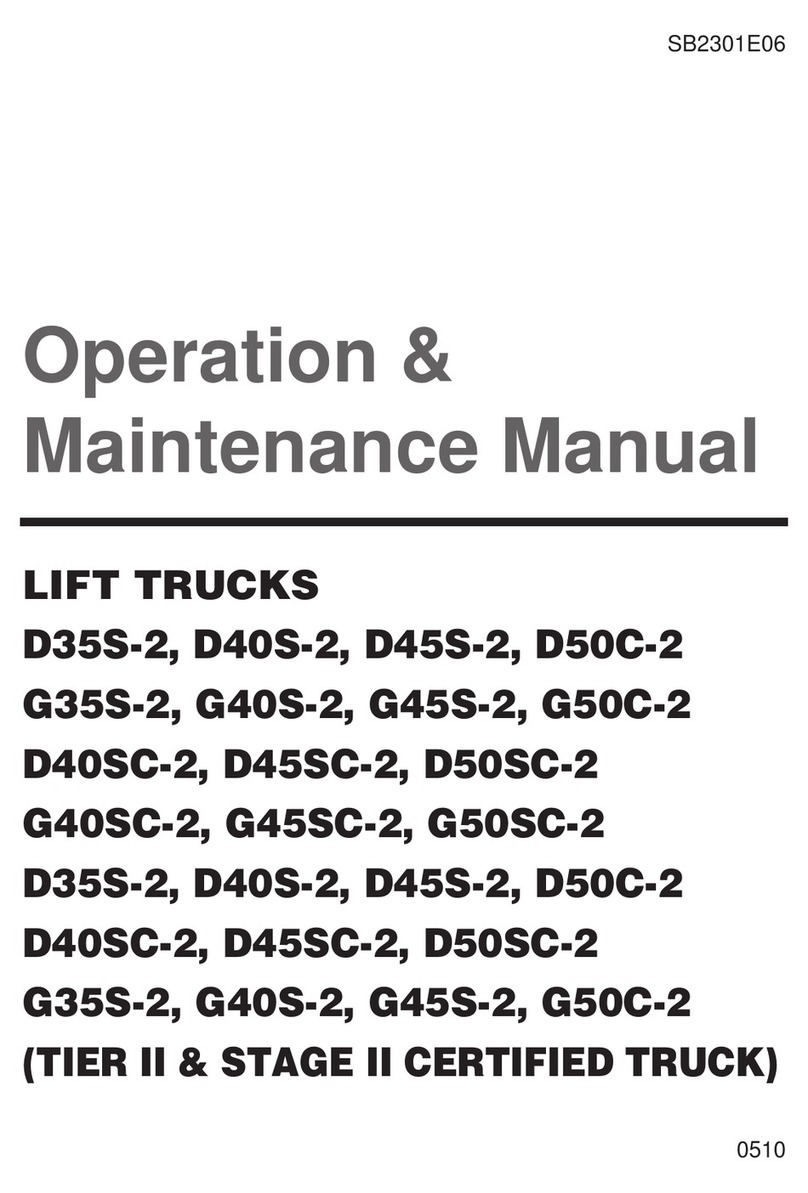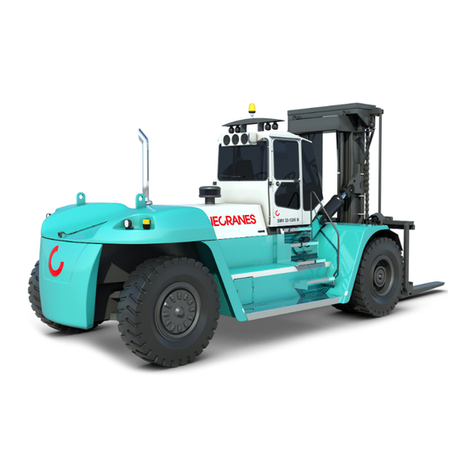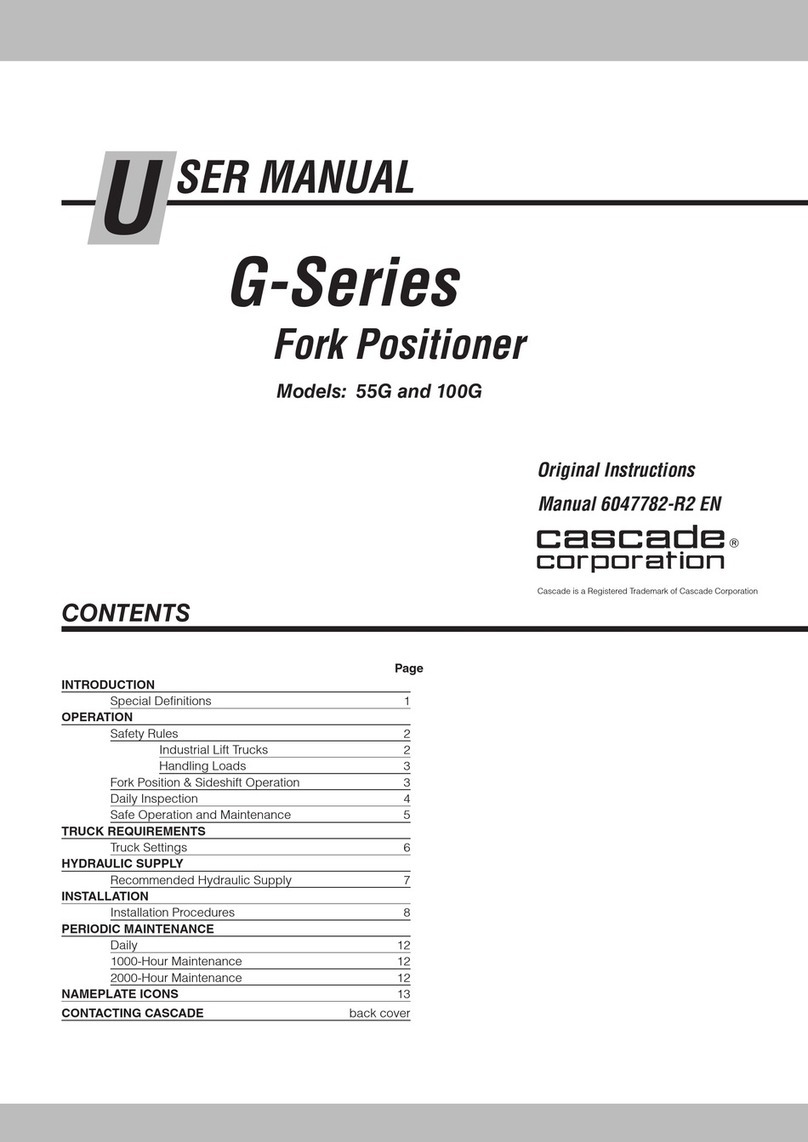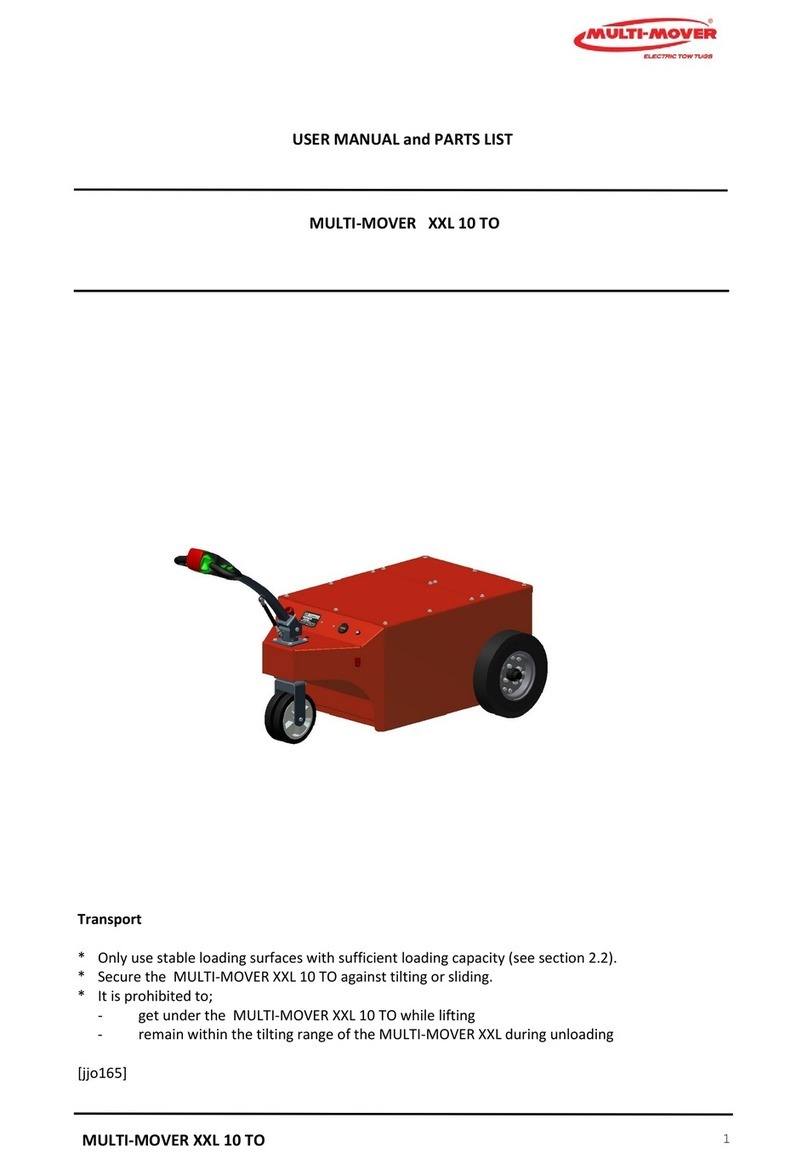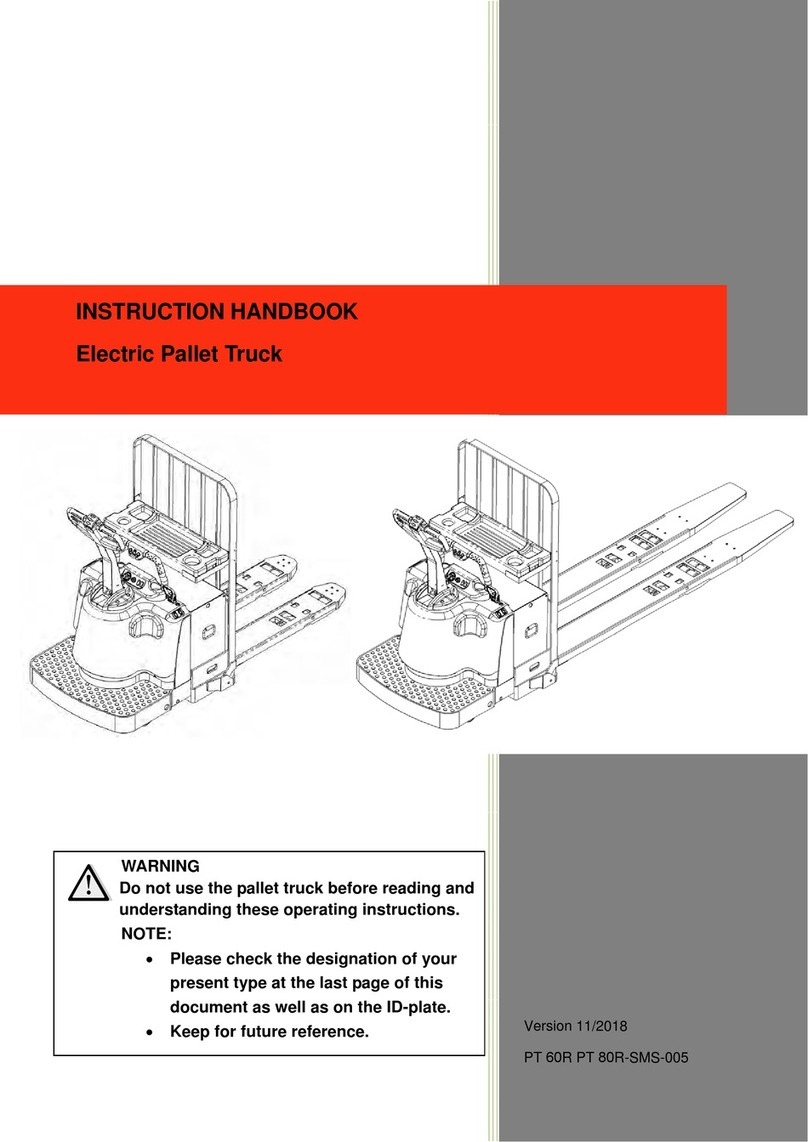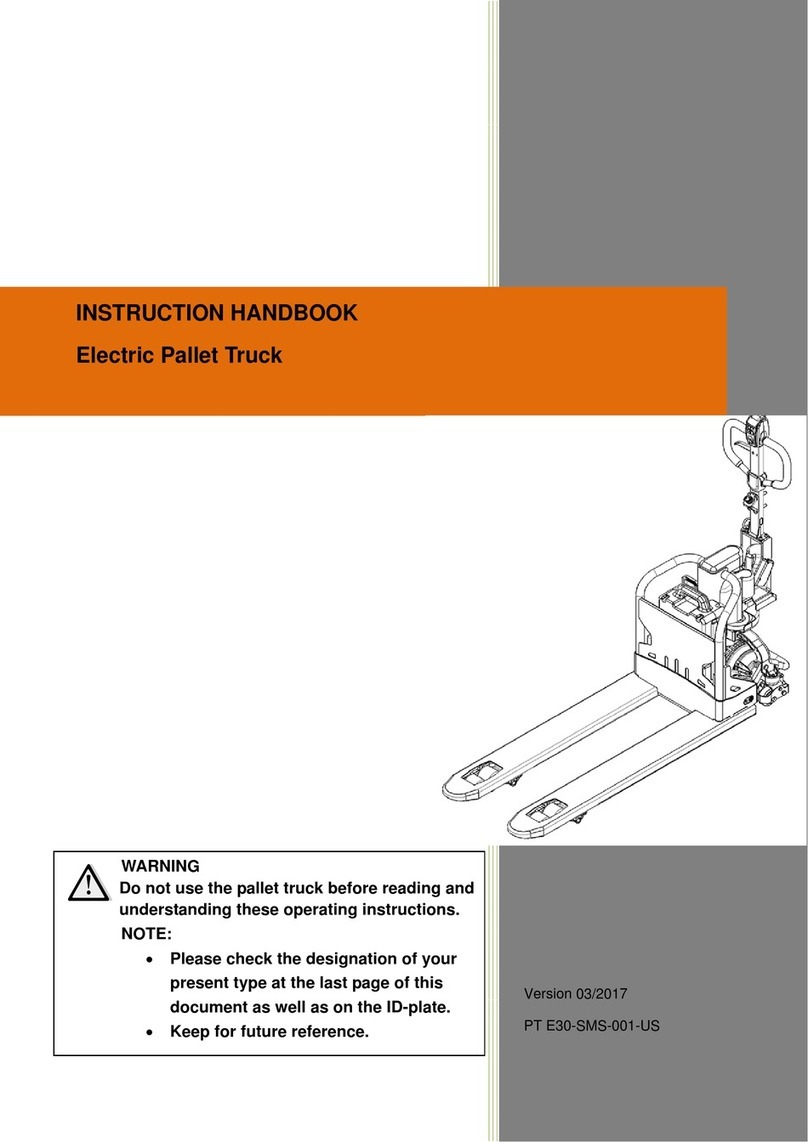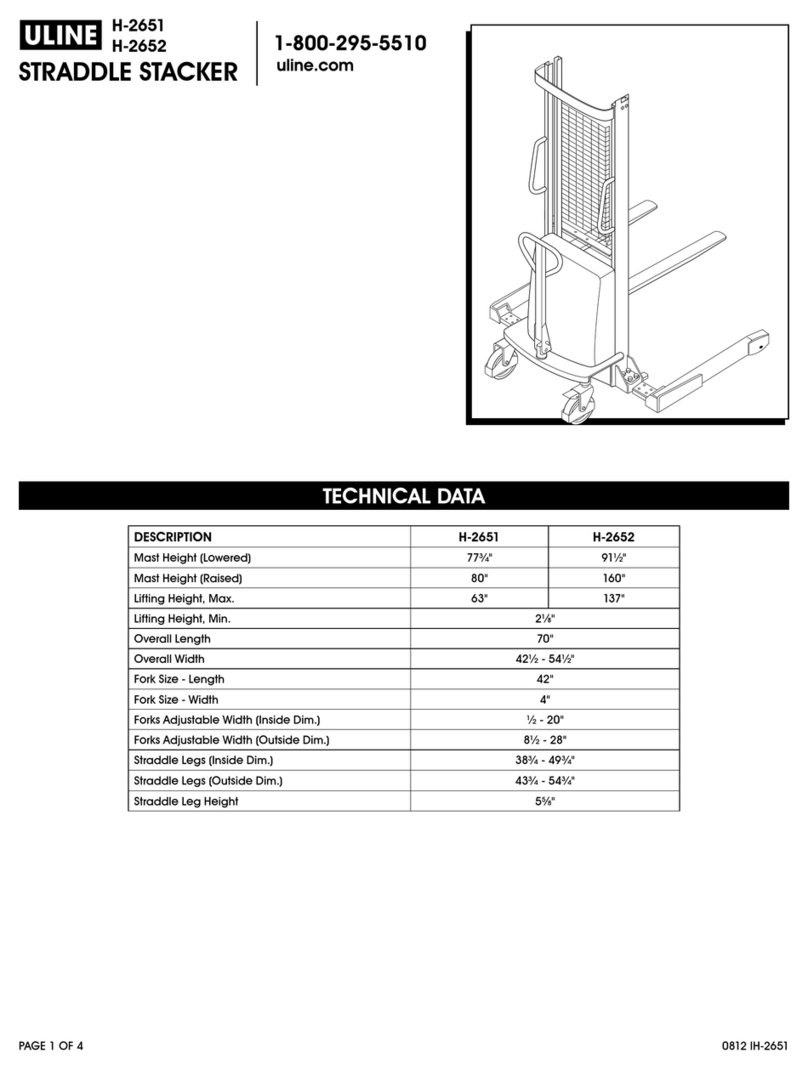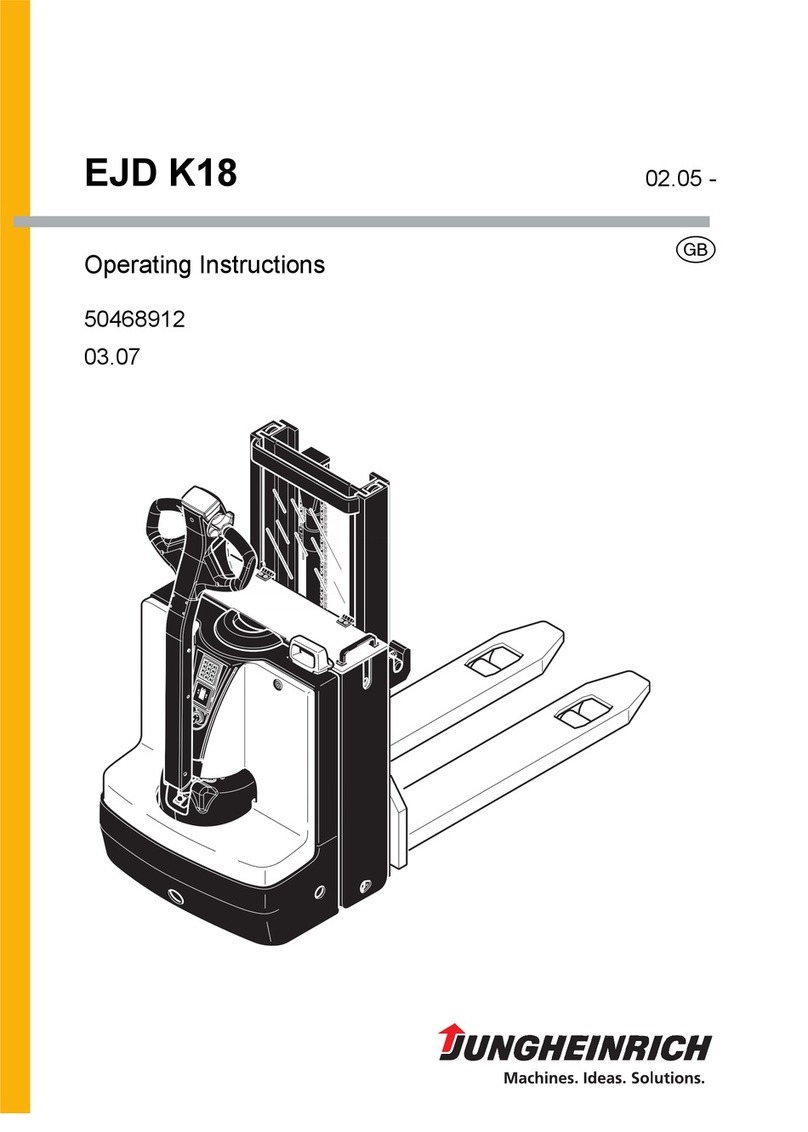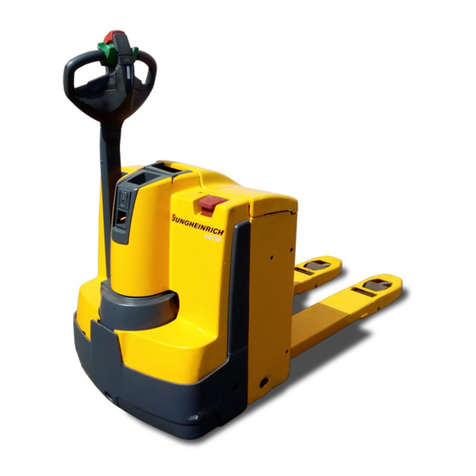21. Do not operate a machine if any rotating part is
damaged or contacts any other part during
operation. Any high speed rotating component that
has been damaged or altered should be checked
for balance before reusing.
22. On LP equipped lift trucks, be sure to close the
valve on the LP tank before service work is
performed. Always close the valve on the LP tank
when the lift truck is being stored. Do not check for
LP leaks with an open flame.
23. Caution should be used to avoid breathing dust that
may be generated when handling components
containing asbestos fibers. If this dust is inhaled, it
can be hazardous to your health. Components in
DOOSAN products that may contain asbestos
fibers are brake pads, brake band and lining
assemblies, clutch plates and some gaskets. The
asbestos used in these components is usually
bound in a resin or sealed in some way. Normal
handling is not hazardous as long as airborne dust
which contains asbestos is not generated.
If dust which may contain asbestos is present, there are
several common sense guidelines that should be
followed.
a. Never use compressed air for cleaning.
b. Avoid brushing or grinding of asbestos containing
materials.
c. For clean up, use wet methods or a vacuum
equipped with a high efficiency particulate air
(HEPA) filter.
d. Use exhaust ventilation on permanent machining
jobs.
e. Wear an approved respirator if there is no other
way to control the dust.
f. Comply with applicable rules and regulations for the
work place (for example in the U.S.A., OSHA
requirements as set forth in 29 CFR 1910. 1001).
g. Follow environmental rules and regulations for
disposal of asbestos.
h. Avoid areas where asbestos particles may be in the
air.
13. Disconnect battery and discharge any capacitors
(electric trucks) before starting to work on machine.
Hang "Do Not Operate" tag in the Operator's
Compartment.
14. Repairs, which require welding, should be
performed only with the benefit of the appropriate
reference information and by personnel adequately
trained and knowledgeable in welding procedures.
Determine type of metal being welded and select
correct welding procedure and electrodes, rods or
wire to provide a weld metal strength equivalent at
least to that of parent metal.
15. Do not damage wiring during removal operations.
Reinstall the wiring so it is not damaged nor will it
be damaged in operation by contacting sharp
corners, or by rubbing against some object or hot
surface. Do not connect wiring to a line containing
fluid.
16. Be sure all protective devices including guards and
shields are properly installed and functioning
correctly before starting a repair. If a guard or shield
must be removed to perform the repair work, use
extra caution.
17. Always support the mast and carriage to keep
carriage or attachments raised when maintenance
or repair work is performed, which requires the
mast in the raised position.
18. Loose or damaged fuel, lubricant and hydraulic
lines, tubes and hoses can cause fires. Do not
bend or strike high pressure lines or install ones
which have been bent or damaged. Inspect lines,
tubes and hoses carefully. Do not check for leaks
with your hands. Pin hole (very small) leaks can
result in a high velocity oil stream that will be
invisible close to the hose. This oil can penetrate
the skin and cause personal injury. Use cardboard
or paper to locate pin hole leaks.
19. Tighten connections to the correct torque. Make
sure that all heat shields, clamps and guards are
installed correctly to avoid excessive heat, vibration
or rubbing against other parts during operation.
Shields that protect against oil spray onto hot
exhaust components in event of a line, tube or seal
failure must be installed correctly.
20. Relieve all pressure in air, oil or water systems
before any lines, fittings or related items are
disconnected or removed. Always make sure all
raised components are blocked correctly and be
alert for possible pressure when disconnecting any
device from a system that utilizes pressure.
WARNING
2 of 2
